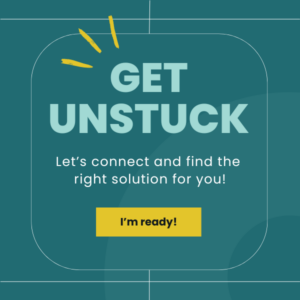What are Flex Fields?
Flex fields are custom fields that can be used repeatedly to limit the number of one-time-only fields within Pardot and Salesforce. They contain data that is required temporarily to execute a specific event or campaign. Once the data is no longer needed, the fields can be reset to blank using an Engagement Program or Automation Rule.
How to Use Flex Fields in Pardot
Since these are meant to be temporary fields, I recommend creating these fields only in Pardot. I use custom fields named ‘Flex Field 1’, ‘Flex Field 2’, ‘Flex Field 3’, etc.
Once the fields are created, you can use them in your forms. Update the label for the field to include the question(s) or response(s) you want to collect.
Clearing the field data
Once your event or campaign is finished and you have exported the data or added these prospects to a list, you can clear out the values for the fields by running an Engagement Program or an Automation Rule.
Using an Automation Rule
To clear the values for your flex field using an Automation Rule, select clear prospect field value as the action and select your flex field from the dropdown

Using an Engagement Program
To clear the values for your flex field using an Engagement Program, select the change prospect field valueaction and set the value to clear.

Let’s take a look at some examples…
Now that you know how to create flex fields, let’s take a look at how they can be used.
For an event
Let’s say you are running an event where attendees need to register for a specific roundtable or session. You can use a flex field within your form to capture what session they would like to attend. Based on the response, you can add the prospects to a list and then set the flex field value back to NULL to use again in the future.
The flex field is added to the form with a dropdown of all the available sessions.


Lists are set up to track registrations for each one of the sessions. Note: these are NOT dynamic lists. since we will be clearing out the data for the flex fields.

An Engagement Program is set up to add prospects to each of the lists based on their selected session. Once the prospect is added to the list, the value for the flex field is set to NULL.




Once the prospects have run through the Engagement Program, they should be added to the list for the session, and the field value for the flex field should be empty.
For a webinar
Another example is to use a flex field to allow prospects to submit a questionw when registering for a webinar.
The flex field can be added to the webinar registration form.

Once the webinar is over, you can run an automation rule to set the flex field value back to NULL.

Other use cases
These are just two examples of how to use flex fields in Pardot, but there are endless use cases. Get creative and make sure to do plenty of testing.
Tips
- Keep track of which flex fields are currently being used. This can be in a Google Sheet, within Slack, etc.
- Not sure where the fields are being used? Check the usage table in the prospect field settings.
- You don’t have to clear the data right away. You can wait until the event or campaign is over and run an Automation Rule to clear out the values.
- If you find that you frequently use these fields, you can create more and keep it specific to the event type. (Ex. Webinar Flex Field 1, Webinar Flex Field 2, etc..)
Questions?
Send me a tweet @jennamolby, or contact the Sercante team for help.










